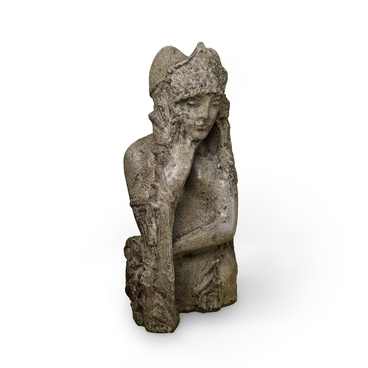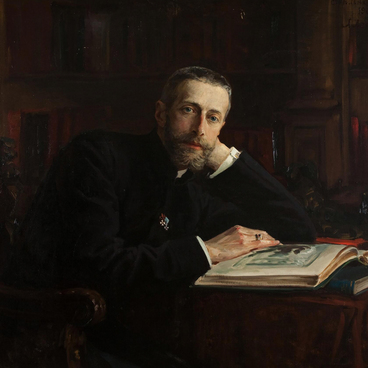The portrait of the poet Alexander Blok was painted by Tatyana Gippius, the sister of the poetess Zinaida Gippius. Tatyana Gippius studied painting at the Higher Art School at the Academy of Arts. In her work, she moved away from the traditions of realism towards modernist trends.
Tatyana Gippius met Blok several times in the notable apartment building the Muruzi House, where the Merezhkovskys hosted a literary salon. It is known that the album of drawings made by Gippius titled “Kindisch” (from German “childish”) with images of fantastic creatures, which she kept as a diary of her dreams and fantasies, inspired Blok to compose a cycle of poems. They included “Creatures of Spring”, “Little Swamp Demons” and “Swamp Priest” from the cycle “Bubbles of the Earth”. A drawing by Tatyana Gippius, “Fish Puppy”, presented to Blok’s wife Lyubov Dmitrievna Mendeleeva-Blok, is also kept in the collection of the Pushkin House.
Subsequently, the artist mainly focused on illustrating books and magazines, in particular the children’s magazine “Tropinka” (Path). In addition to the portrait of Blok, Gippius worked on portraits of Andrei Bely (it is kept in the writer’s memorial apartment in Moscow) and Lyubov Dmitrievna Mendeleeva-Blok (the portrait is in temporary storage in the Alexander Blok Apartment Museum). Whereas the images of both poets are distinguished by ghostliness and “otherworldliness”, the portrait of Mendeleeva-Blok, on the contrary, is tangible and vibrant. The portraits of the Bloks entered the collection of the Pushkin House in 1940, after the death of Lyubov Dmitrievna, along with furniture and memorabilia from the Blok apartment on the Pryazhka River Embankment.
After the Russian Revolution, Tatyana Gippius,
unlike her sister Zinaida, remained in Russia. In the 1920s, she continued
teaching at Soviet School No. 35. In December 1928, Gippius was arrested for
participating in the Voskresenie (Resurrection or Sunday) group and sent to
Solovki. After her release in 1931, she went to Vyatka, and later, together
with her other sister, the sculptor Natalia, she moved to Novgorod. At the
beginning of the Great Patriotic War, they both were taken to Germany and ended
up in the American occupation zone.


